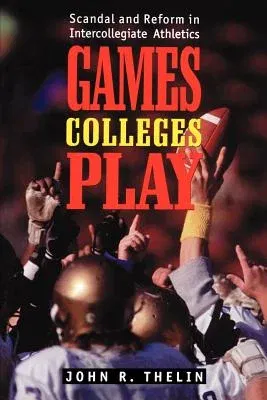In Games Colleges Play John Thelin chronicles the history of
intercollegiate athletics from 1910 to 1990 from the early, glory days
of Knute Rockne and the "Gipper" to the modern era of big budgets,
powerful coaches, and pampered players. He describes how
"extracurricular" sports programs seldom accorded equal prominence with
teaching and research in mission statements or annual reports have
become central to the life of many universities. As administrators
search for a proper balance between athletics and academics, Thelin
observes, this "peculiar institution" in American higher education grows
increasingly powerful and controversial. Looking past the playing fields
and lavish facilities into board rooms and administrative suites, Thelin
finds disturbing patterns of abuse and limited reform and explores the
implications of these patterns for today's college presidents, faculty,
and students. He examines the 1929 Carnegie Foundation Report, the
formation of major athletic conferences, the national college basketball
scandals after World War II, the dissolution of the Pacific Coast
Conference in the 1950s, and the Knight Foundation Report of 1991. Games
Colleges Play provides historical background that will inform current
policy discussions about the proper place of intercollegiate athletics
within the American university. "Intercollegiate athletics has been a
perennial source of opportunity and temptation, " concludes Thelin, "as
the American campus has worked and re-worked its relations with American
culture."

